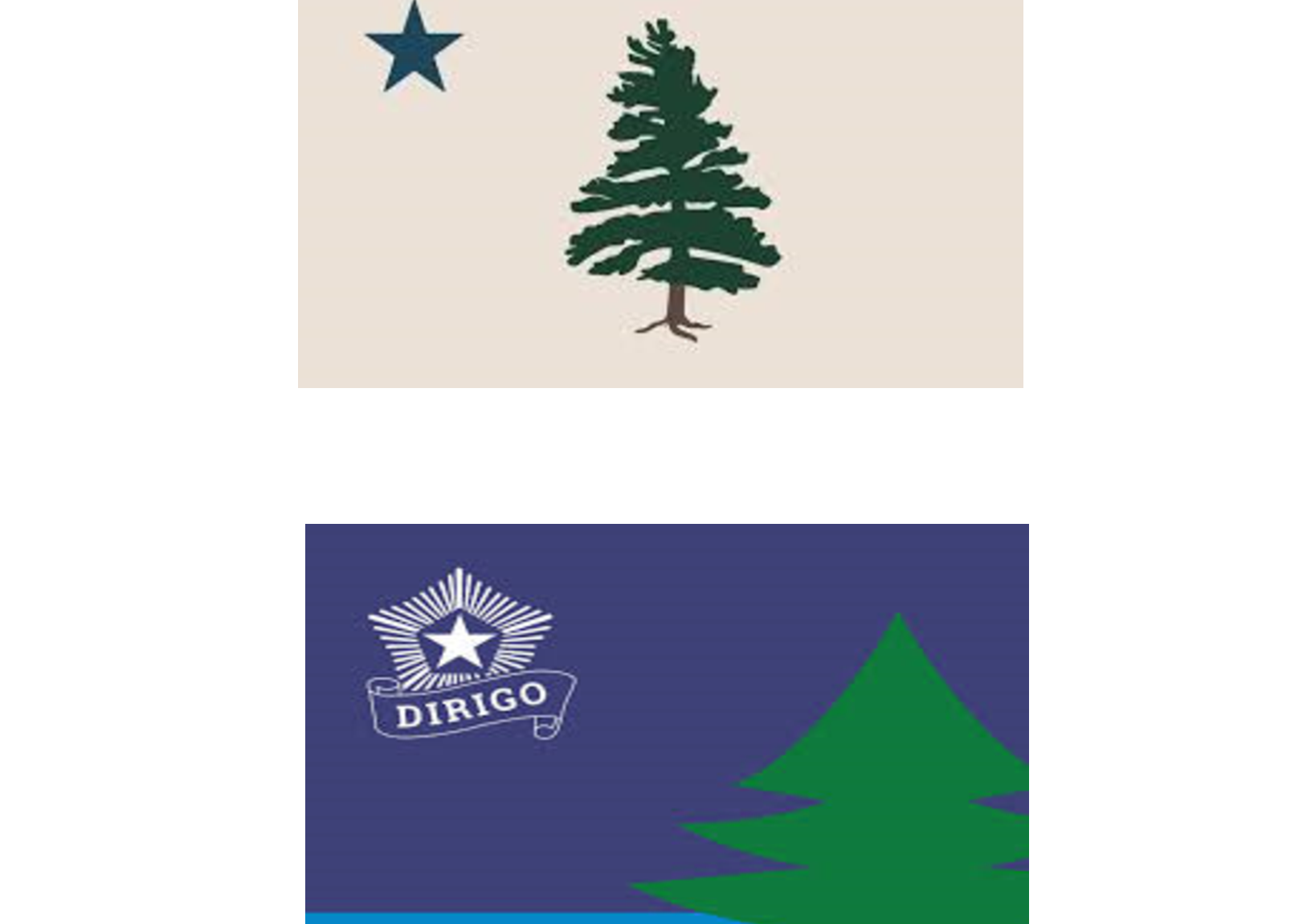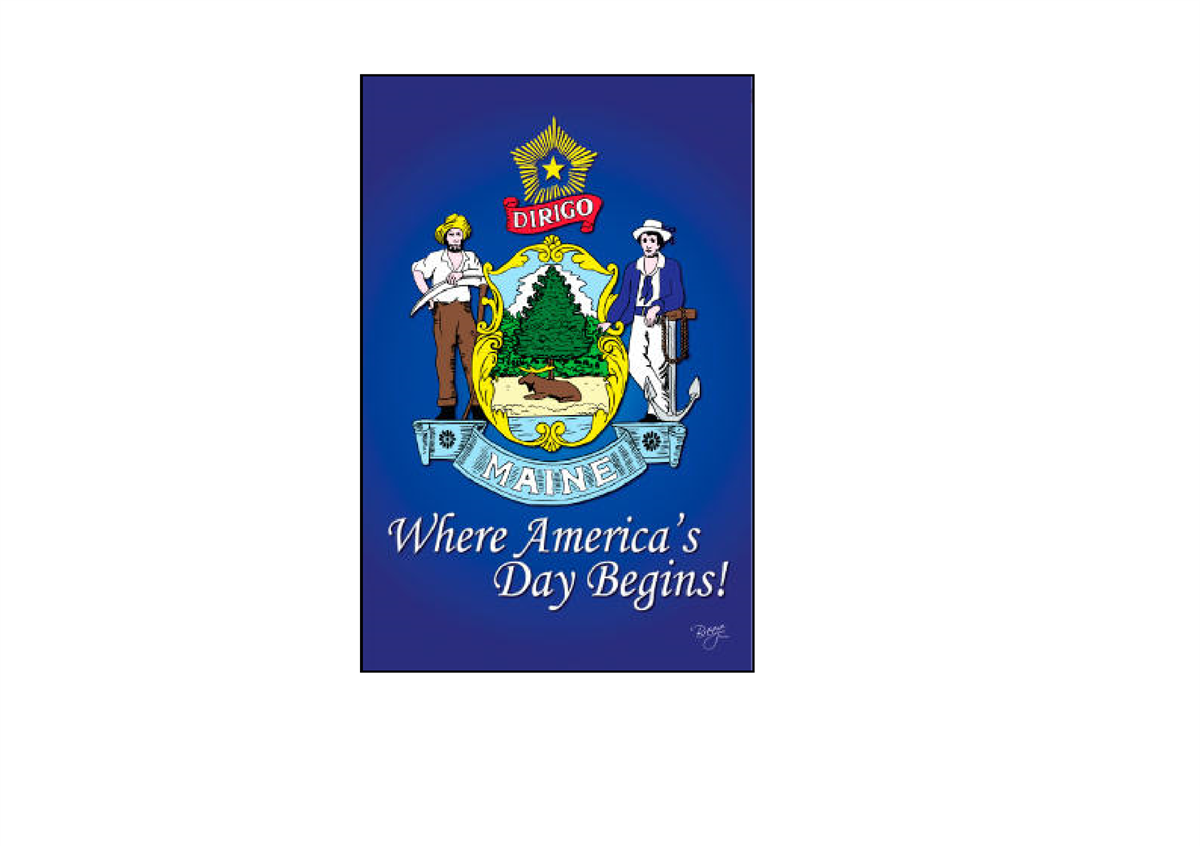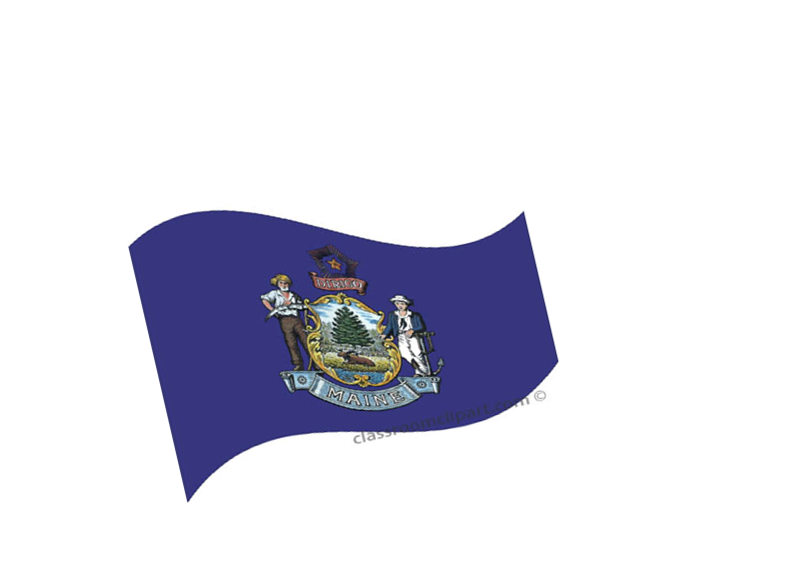| A message from %%!account_organization%%. |
|
|
|
824 Roosevelt Trail, Unit #4
Windham, ME 04062
207-893-0339 maineflag@hotmail.com
|
|
|
|
|
|
|
|
|
|
|
|
|
|
|
WHY the PINE TREE?
As I hope you are aware, this year Maine celebrates its 200th year as the 23rd state to join the United States of America. March 15th is our anniversary. In July of 1820 our star was added to the American flag.
There are many celebrations and events planned throughout the year to mark the occasion. An abundance of articles and research will be at hand for any who would like to delve deeper into our history and our evolution from being a part of Massachusetts to becoming an independent state. I hope you will make a point to take advantage of the opportunities available to you.
Because I love flags and their depiction of history in their designs, I became interested in the continuing theme of the White Pine Tree in our history as a nation and a state.
The Pine Tree as a symbol in Northeastern America manifested long before our founding. Before the 1600s, five Native American warring tribes of the Iroquois Nation united in peace to become known as the Iroquois Confederacy, also known as the Five Nations. The result of the gathering of these tribes that included Mohawk, Oneida, Onondaga, Cayuga and Seneca is characterized as the one of the world’s oldest participating democracies. It took place under a majestic White Pine Tree. One of the legends states that the White Pine was chosen because of its majestic height could be seen for miles around and the evergreen properties represented enduring peace. It is also referred to as the Peace Tree.
It has been said that the early settlers were awestruck at the sight of the 200 plus foot White Pine. It did not take long for the early Americans to discover its benefits. The usefulness of its properties made it one of the most valuable trees for a multitude of reasons. Among these included providing the resources for essential products such as tar; firewood; building materials; resin and pitch; turpentine; and even medicines and food. The importance of the White Pine to the colonists cannot be underestimated.
Before the discovery of the benefits of the Eastern White Pine Tree, Britain had been in great need of strong straight tall trees for the massive Royal Navy’s battleships. All of the appropriate trees for masts in England and a great deal of Europe had been cut years before. They had been reduced to the less than ideal wood of the Scotch Pines from Sweden and Russia to manufacture their masts. Not only was the supply not sustainable but the masts had to be spliced together resulting in less strength, more labor thus more expensive. Another drawback to this arrangement was Denmark controlled the waterway to the Baltic Sea that allowed England to collect the trees in Russia and Sweden. It was a shaky arrangement at best especially if the tenuous relations with Denmark were to deteriorate.
Therefore in 1691, during William and Mary’s reign, the monarchs dictated their ownership for the British Royal Navy of all the best White Pines in New England by distinguishing the 24” diameter or larger trees from all others. Agents were sent to New England to place the Crown’s mark called the “broad arrow” on trees that was on each colonist’s land.
To reinforce the edict a 100 pound fine was assessed on any subject that cut one of the chosen trees. The edict was broadly ignored and enforcing it became problematic for the British primarily because the courts and law enforcement in New England sympathized with the colonists. The Crown did their best to enforce the rules from sending spies and offering them rewards of the offender’s land. Eventually threats escalated to flogging. No enforcement act by Britain was effective in stopping the cutting but it most assuredly fueled the resentment of the colonists and their resolve to “keep their Trees”.
By 1722 King George I agents cut the broad arrow mark to claim all White Pine Trees with a 12” diameter and up, thus reducing the White Pines available to the colonists. Add one more grievance to the growing list and tensions between the mother country and the American colonies.
Over the years, the cumulative effects of the Crown’s increasing restrictions, taxes, and laws resulted in periodic rebellious acts. One of these acts was the Pine Tree Riot of 1772 which has been said to be instrumental in inspiring the Boston Tea Party over a year later. The king’s mark on the White Pine created more agony and ire than the Stamp Act in 1765. When the Deputy Surveyor of New Hampshire searched sawmills, six mills were found possessing trees marked with the broad arrow of King George III. The consequence of the fines and punishments upon the mill owners was an excuse for them to violently assault the Crown’s Deputy Surveyor and his assistant. Even though the punishment was fairly light, relations did not improve with the Crown.Now we get an inkling of why the White Pine Tree became an important symbol to the Revolutionary cause and to the State of Maine. The depiction of the Pine Tree on the flags of the early settlers has been an enduring symbol of its relevance to our survival and our freedom from the constant overlord of colonists’ land and possessions.
Geographically, Maine still has one of the best climates for the continued growth of the Eastern White Pine and it is still valuable to the Maine economy. The White Pine has appeared on Maine’s flag since the beginning of our statehood. The first design used after March 15, 1820, as the semi-official flag, was the Maine Militia flag of the 5th Regiment. It was replaced in 1901 with the classic design of the Pine Tree and North Star on a buff colored background. Eight years later in 1909 that gave way to our current flag depicting the State of Maine Seal on the blue background.
Like our current state flag, the 1901 design left exact colors as well at the look of the Pine Tree open to interpretation. There is only one known copy of the 1901 flag existing presumably made in 1908. Many of the ones manufactured today are a stylized version of the tree and in numerous shades of buff background.
Our latest flag rendition of the White Pine Tree is the bicentennial flag. It has a dark blue background with a lighter blue stripe along the bottom; the North Star and our motto on the top hoist side of the flag; and the oversized White Pine on the bottom right of the fly side. Maine will always be inextricably linked to the Eastern White Pine.
Why the Pine Tree? Now you know.
|
|
|
|
|
|
|
|
|
|
|
|
|
|
|
|
“No writing on the solitary meditative dimensions of life can say anything that has not already been said better by the wind in the pine trees.” ~ Thomas Merton
“Would fate unkind send us roam
The scent of the fragrant pines
The tang of the salty sea will call us home.” Roger Vintor from State of Maine Song
“Between every two pine trees there is a door leading to a new way of life.” John Muir
“Ever eat a pine tree? Many parts are edible.” ~ Author Euel Gibbons
|
|
|
|
|
|
|
|
|
Your flag's life can be doubled or even tripled if you repair it at the first sign of fraying. The fly end (top right hand corner) is the most vulnerable to tearing. Think of the force of snapping a wet towel and that is probably less than what your flag endures on windy wet days.
If sewing isn't your thing, there are many local seamstresses who can repair it for much less money than a new flag.
It's always a good idea to bring your flag in if you know there is stormy or windy weather on its way.
I have customers swear by the Armor All Protectant used for car interiors to help prevent fading.
|
|
|
|
|
|
|
|
|
|
Before 1820, Maine was under the flag of Massachusetts. Maine and Massachusetts are the only two states with their own naval ensign.
Note the pine tree.
|
|
|
|
|
|
|
|
March is Maine's birthday month. Celebrate our 200th with a new flag.
|
|
|
|
|

|
The 1901 original and Bicentennial flags are made in Maine. 2'x3' and 3'x5' sizes in stock
.
|
|
|
|
|

|
|
Pole hem banners large and small with the Maine state seal and phrase "Where the Day Begins" displayed on Maine coin that was part of the United States Mint's 50 State Quarters Program .
|
|
|
|
|

|
Maine flags are made in the United States and are available from 4"x6" to 5'x8' flags. Most in stock.
|
|
|
|
|
|
|
|
Maine Flag and Banner
824 Roosevelt Trail, Unit #4
Windham, ME 04062
(207) 893-0339
|
|
|
|
Store Hours
Mon-Fri 9 a.m. to 5 p.m.
Saturday 9 a.m. to 3 p.m.
Please give us a call if you
can't see us during regular
hours.
|
|
|
|
|
Maine Flag & Banner is a unique family owned store located in the beautiful Sebago Lakes Region of southern Maine. Our store is full of fun colorful things that blow in the wind. Windsocks, spinners and banners abound.
Looking for flags? Your pride of country, state and heritage can be displayed proudly with U.S., state, military, or foreign flags, all made in America.
If you have a business, the multitude of choices in colors and sizes of OPEN flags lets your customers know you are there and ready to serve. For home owners, a large variety of decorative, seasonal, sports and everyday banners make your home stand out and are in stock for your convenience.
Of course, we carry all the hardware and accessories to show off all the fun stuff. Maine Flag also sells flagpoles from 15' and up to 100'!
Come on in for a friendly, helpful and knowledgeable experience.
|
|
|
|
|
|
|
|
|
|